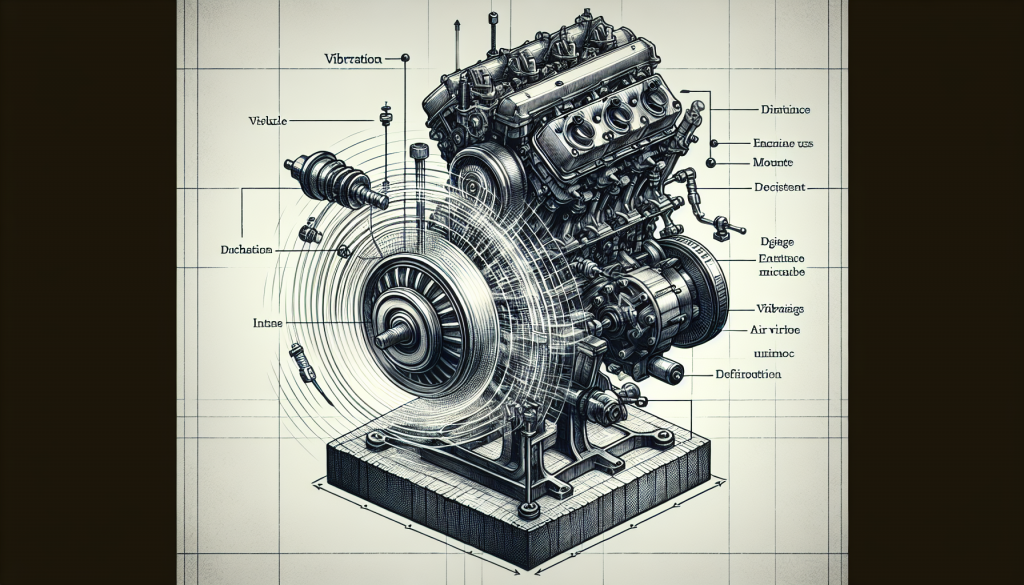Spotting Engine Mount Vibration
Signs Your Engine Mounts Are Acting Up
When your car starts shaking like it’s doing the cha-cha, it might be your engine mounts crying for help. Catching these signs early can save you a lot of headaches (and money). Here’s what to look out for:
- Shaky Business: If your car feels like it’s got the jitters, especially when it’s just sitting there idling, your engine mounts might be toast. Curious about why your car’s shaking at idle? Check out car shakes at idle.
- Clunking Around: Hear a loud clunk when you hit the gas or brake? That’s your engine mounts saying, “Hey, we need some love!”
- Engine on the Move: If you pop the hood and see your engine doing a little dance, it’s probably because the mounts are busted.
- Noisy Engine: If your engine sounds like it’s trying to start a band with all that thumping and banging, it’s time to check those mounts. For more on engine noise, see engine vibration while idling.
Why You Should Care About Engine Mount Vibration
Ignoring engine mount issues is like ignoring a toothache—it’s only going to get worse. Here’s why you should fix it pronto:
- Keep It Steady: Good engine mounts keep your engine where it belongs. Bad mounts? They mess with your car’s stability and performance.
- Protect Your Parts: Worn-out mounts let your engine move too much, which can mess up other important stuff like your exhaust, radiator, and transmission. For more on these issues, see exhaust system vibration and transmission vibration.
- Comfort and Safety: Nobody likes a bumpy ride. Fixing those mounts makes driving smoother and safer.
- Avoid More Damage: Ignoring the problem can lead to more wear and tear on parts like the driveshaft and suspension. Want to know more? Visit driveshaft vibration and suspension vibration.
Knowing the signs and why it’s important to fix engine mount vibration can help keep your car running smoothly. For a full guide on diagnosing car vibrations, check out vehicle vibration diagnosis.
Troubleshooting and Solutions
Figuring Out Engine Mount Problems
When your car starts shaking like a washing machine on spin cycle, it’s time to check those engine mounts. Here’s how I do it:
First, I pop the hood and take a good look at the engine mounts. If I see cracks, wear, or the rubber bits looking sad and separated, that’s a red flag. I also keep an eye out for any fluid leaks around hydraulic mounts.
Next, I fire up the engine and give it a little rev. If the engine’s doing the cha-cha or there’s a noticeable vibration, something’s up with the mounts. I also listen for any weird noises like clunking or banging—those are usually bad news.
| Diagnostic Step | What to Look For |
|---|---|
| Visual check | Cracks, wear, fluid leaks |
| Engine rev test | Excessive movement, vibration |
| Noise check | Clunking, banging sounds |
For a deeper dive, I might use a pry bar to gently lift the engine and see how the mounts hold up under pressure. This can reveal hidden issues that a quick glance might miss.
Fixing and Preventing Engine Mount Vibration
Once I’ve figured out the problem, it’s time to roll up my sleeves and get to work. Replacing the busted mounts is usually the best fix. I make sure to use mounts that fit my car’s make and model like a glove.
To keep those vibrations at bay in the future, I stick to these steps:
- Regular Check-Ups: I make it a habit to inspect the engine mounts during routine maintenance. Catching wear and tear early can save a lot of headaches.
- Proper Installation: Getting the mounts installed right is key. Misaligned mounts can wear out faster and cause vibrations.
- Easy on the Rough Roads: I avoid driving over rough terrain or potholes at high speeds. It’s like asking for trouble.
- Quality Parts: Using top-notch engine mounts can make a big difference. They last longer and keep vibrations to a minimum.
By knowing how to diagnose and fix engine mount issues, I can keep my car running smoothly. For more tips on dealing with car shakes and vibrations, check out our articles on car shakes in drive and vehicle vibration diagnosis.



